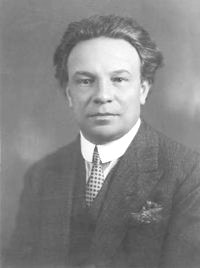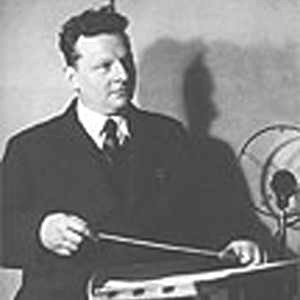Oakland mom chosen Maine’s Mother of the Year for 2020
/0 Comments/in Community, Oakland/by Website EditorAdrian Phair, of Oakland, was recently announced as the 2020 Maine Mother of the Year. She was nominated for her contributions as a mother in her home, workplace and community. She is the 59th woman in Maine history to hold this honor.
Mrs. Phair is a former Child Protective Services social worker and mother of two. She is being recognized for her leadership as Board President and Camp Director at Camp To Belong Maine, a nonprofit organization that works to reunite siblings that have been separated from each other while in foster care.
Mrs. Phair, along with honorees from states across the US, will be recognized during the 85th National Convention of American Mothers, Inc. in Washington, DC, April 19 – 21. She will also serve as an ambassador for Maine mothers during visits with members of Congress. One honoree will be named the National Mother of the Year during a gala fundraiser for the American Mothers’ “Golden Rule Grant Fund” on April 21.
“For 85 years American Mothers, Inc. has held the responsibility of searching for and selecting the Mother of the Year in every state, district and territory in our country,” said Connell Branan, Board President. “Like all of the honorees before her, Mrs. Phair now joins the ranks of Maine history, with the opportunity to become a part of American history as she represents the mothers in her state and is considered for the honor of 2020 National Mother of the Year.”
For more information about the organization, visit AmericanMothers.org and look for @AmericanMothers and #MomNation on social media.
Vassalboro, Winslow: After-School programs win award
/0 Comments/in Community, Vassalboro, Winslow/by Website Editor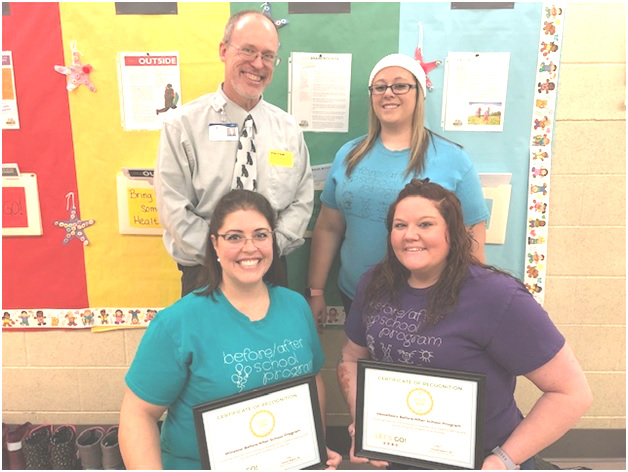
Front row, from left to right:, Jennifer Lizotte, administrative assistant, and Tiffany Carrigan, director of programming. Back row, Jim Fortunato, and Samantha Bernatchez, director of operations. (contributed photo)
Jim Fortunato, Let’s Go! Northern Kennebec County Coordinator, Northern Light Inland Hospital, has awarded the Winslow and Vassalboro Before/After School Programs with a Gold Recognition for the 2018-19 school year. This is the highest level of recognition for sites that have achieved all five priority strategies of the 5210 Let’s Go! Program.
The 5210 Let’s Go!, introduced in 2012, is committed to promoting policy and environmental changes at childcare programs, schools, out-of-school programs, health care practices, and workplaces. The program’s multi-setting approach, daily 5-2-1-0 message (five or more fruits and vegetables, two hours or less of screen time, one hour or more of physical activity and zero sugary drinks) and 10 evidence-based strategies are used to effect change across the state of Maine. Strong leadership from The Barbara Bush Children’s Hospital at Maine Medical Center and collaboration across health systems and community health coalitions contribute to the program’s success.
The 5210 Let’s Go! awards bronze, silver and gold awards to programs who support and collaborate with them around healthy eating and increased physical activity. A Bronze award reflects a site’s implementing the program’s five evidence-based priority strategies. Silver acknowledges a site that has communicated these changes to parents and family members. Gold, the highest level of recognition, is reserved for sites that have written all five priority strategies into policy or have school staff participate on the district’s wellness committee.
There’s plenty to watch on TV without having to pay for cable
/0 Comments/in Community/by Website Editor (NAPSI)—When it comes to home entertainment, one of the latest innovations in TV viewing is really one of the oldest: the antenna—and budget-conscious consumers are thrilled.
(NAPSI)—When it comes to home entertainment, one of the latest innovations in TV viewing is really one of the oldest: the antenna—and budget-conscious consumers are thrilled.
How It Works
These days, with a new smart TV or inexpensive antenna, you can “cut the cord” and discover a vast array of shows and specials, new and nostalgic, via what’s called a diginet or digital subchannel. In 2009, the government changed the way local stations broadcast their signals, moving them from old-fashioned “analog” signals to newer, more efficient “digital” signals.
That allowed every local broadcast channel to divide up its spectrum into multiple feeds — in the room that it used to take it to air just one channel, it can now air three or four additional digital channels (not just, say, Channel 4, but Channel 4.1, 4.2, 4.3 and so on), while still maintaining high picture quality.
With all this new space available, many new “digital subchannels” or “diginets” formed — and have partnered with local broadcast stations to air across the country in local markets. As a result, shows and movies from across the history of TV are now available regularly.
The fun and economy they provide is increasingly popular. In fact, the number of U.S. households that get their TV signals via over-the-air antenna is now more than 24 million homes.
Why It’s Popular
The skyrocketing costs of cable and satellite TV, the extra fees charged for channels you don’t want, streaming and over-the-top (OTT) platforms in this new golden age of content, have left consumers searching for the best choice and value. Today’s antennae hold the key to hundreds of channels waiting to be discovered and, unlike the old “rabbit ears,” the new compact indoor kind are really easy to set up and use. As one user put it: “It’s been awesome. It doesn’t log out and it doesn’t skip.”
The antennae cost only around $20 or less and are available at most major electronics or big-box stores and on Amazon—and you get to skip the monthly fee. Indoor antennae are small, powerful and discreet. They’re great for people living in apartments or crowded cities. Outdoor antennae are traditionally mounted on the roof and can get more than 150 TV signals. They’re a great option for those who live far from broadcast towers.
What To Watch
Even though most of what’s shown on diginets are classic movies and episodes of TV series from 1950−1990s, there’s something for everyone, from sitcoms to Westerns to crime dramas to variety shows. One of the most popular diginets, getTV, anchored by Sony Pictures Entertainment’s vast library, airs such programs as “The Unit,” “Married…With Children,” “Good Times,” “Amen,” “The Steve Harvey Show,” “Walker, Texas Ranger,” “The Johnny Cash Show,” “Hot in Cleveland” and “All in the Family.” Other major diginets include MeTV, Comet, Antenna TV, Cozi TV, Escape, Grit and Laff. No cable, satellite or Internet connection is necessary.
Where To Learn More
To see a full programming schedule, go to www.get.tv.
I’M JUST CURIOUS: Just have fun!
/0 Comments/in I’m Just Curious/by Debbie Walker by Debbie Walker
by Debbie Walker
Just for fun seemed like a nice change for a New Year, I hope you agree. This is going to be multiple choice commercial jingle trivia test: (underline or circle)
“Double your ________, double your fun!”
Leisure – pleasure – treasure
“Juicy Fruit is gonna move ya! It’s got a taste that _______ right through ya!”
Gets – moves – hits
“Kiss a little longer, stay close a little longer,________ a little longer, longer with Big Red!”
hold hands – make out – hold tight
“If I were an ________, everyone would be in love with me!”
Oscar Mayer hot dog – Oscar Meyer Wiener – Oscar Meyer Sausage
“The best part of _______is Folgers in you cup.”
Waking up – getting up – perking up
“I’d like to buy the world a Coke and keep it ________.”
Nice & clean – company – in harmony
“Be a _______, drink Dr Pepper.”
little better – winner – Pepper
“Plop, plop, fizz, fizz, oh what a ______”
Help it is – joy it is – relief it is
“Two all beef patties, special sauce, ________, cheese, ________onions on a sesame seed bun.”
Lettuce, pickles – lettuce, tomato – pickles, lettuce
“Have it your way, have it your way at ________.”
Taco Bell – Burger King – Wendy’s
“Ace is the place with the ________.”
Helpful hardware man – handy hardware man – helping hardware man
“See the U.S.A. in your _______.”
Buick – Ford – Chevrolet
“Put a tiger in your tank.”
Frosted flakes – ESSO – Little Debbie Snack Cakes
“Silly rabbit, ________ are for kids.”
Oreo’s – Cheerios – Trix
“I don’t want to grow up, I’m a ____ ___ _____ kid.”
Sears – Walmart – Toy’s R Us
“American Express: Don’t leave _______ without it.”
Home – New York – Work
The answers will be as follows. See how you do:
“Double your”- pleasure
“Juicy Fruit”- gets
“Kiss a little”- hold tight
“Big Red”- hold tight
“Oscar Mayer” – Wiener
“Folger’s” – waking up
“Coke”- company
“Dr Pepper”- pepper
“Alka seltzer”- relief it is
Two all beef – lettuce – pickles
“Your way” – Burger King
ACE – helpful
U.S.A. – Chevrolet
Tiger – ESSO
Rabbit – Trix
“grow up”__ Toy’s R Us
“American Express’ – home
As usual I AM JUST CURIOUS how you did with our little test. Contact me with questions or comments at dwdaffy@yahoo.com. Thank you for reading!!
REVIEW POTPOURRI – Respighi: Fountains of Rome; Pines of Rome
/0 Comments/in Review Potpourri/by Peter Catesby Peter Cates
Respighi: Fountains of Rome/Pines of Rome
Franz Andre conducting the Belgian National Radio Orchestra; Telefunken TC-8002, vinyl budget-priced LP from the late 1950s.
For people starting to listen to classical music, I would more readily recommend the Respighi Pines and Fountains of Rome over most Beethoven and Brahms Symphonies. These two pieces have the most colorful sounds, the loveliest strands of melody, and a very vivid sense of location.
The fountains are four spread around the historical city and musically evoked at different times of day, while four different rows of Rome’s magnificent pine trees are treated the same. The Fountains were premiered in 1916 during World War I, while the Pines received their debut in 1924. Both demand extraordinary virtuosity from a full symphony orchestra but have become immensely popular, receiving numerous recordings since then.
I have several different ones but, for some mysterious reason, was particularly drawn to Franz Andre (1893-1975), who was arguably the most prominent and busiest conductor in Belgium’s cultural life for almost 40 years, yet not that well-known in the United States. He delivered exceptionally exciting renditions that stand alongside those of Arturo Toscanini, Fritz Reiner, Eugene Ormandy Riccardo Muti, Seiji Ozawa, to mention a few. Several of Andre’s recordings of other works can be heard on YouTube but not the Respighis. However, E-bay and other vendors have copies of the LP for sale.
Some facts about the composer, Ottorino Respighi (1879-1956) – He had a fascination with languages as well as music and collected dictionaries.
He took piano under his father’s tutelage but was quite undisciplined in his habits. However, his father was startled one day to find his son playing the very difficult piano work, Symphonic Etudes, with total mastery.
He suffered from narcolepsy and would suddenly and frequently fall asleep.
He married one of his composition students in 1919 when she was 25 and he was 40. She outlived him by 60 years and died at 102, in 1996.
PAGES IN TIME – South China’s Summer Colony: The Bolt Hole
/2 Comments/in Pages in Time/by Website Editor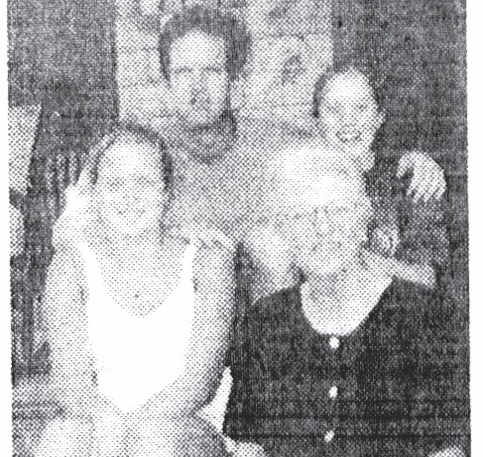
Lee Hargadon, front, joined her son Geoff, back, and his daughters Ashley, left, and Stephanie. (The Town Line file photos)
Reprinted from August 9, 1997
by Dorothy Templeton
The Leaning Elm cottage boasts one delightful addition called “the Bolt Hole.” Barbara Jones Haskins describes its construction: “My daughter Lee and her family spent several years in Colombia, South America. When they returned and came back to the cottage, Lee’s five children and her husband, plus my husband and I, all stayed in a cottage with partitions like tissue paper. An architect friend drew up a plan for an addition for privacy, with a bedroom, bath and kitchen space. Lee’s sons Geoff and Bob, teenagers (15 and 13 respectively) at the time, helped with the construction.”
Lee Hargadon takes up the story: “It was to be a glorified bedroom. They worked on it the summer of ‘69 with Ralph Austin. In South America, Spanish had become their primary language, so that’s what the boys used to talk together. It was frustrating for Ralph: he didn’t have a clue as to what was being said.”
“We were paid 30 cents an hour,” Geoff (visiting for two weeks with daughters Ashley and Stephanie) recalls, “and I hated getting up early in the morning. Someone put in the supports and we all did the sawing. It took all summer, nine to four, with Saturdays and Sundays off. We couldn’t get to swim when we wanted to.” The Bolt Hole (so dubbed by visiting English cousins because one could “bolt away” to it), is connected to the cottage by a short wooden walkway, provides a delightful escape, is of good size, high-roofed, with a window wall overlooking the lake.“We always spend all winter thinking how we will get back to South China,” Barbara admits. “People from the colony are scattered from coast to coast. But when we return here, we pick up relationships as though we’d been all year together. Hugh Weed’s mother and aunt lived ion the front of the inn at one time and Ella would walk down and visit me. (Hugh’s parents, Hazekiah and Ella, were the second of Wilmot Sr.’s friends to build a cottage, in 1900).”
A sense of timelessness prevails on the porch of the Leaning Elm. Bird song, wind in the trees, voices from nearby cottages blend. Nobody hurries, their activities repeating those of a century ago. The porch steps where the family has gathered to eat watermelon must have witnessed this event countless times. Lee insists, “The steps are crucial to family life at the cottage. We drink our morning coffee sitting on them, eat a luncheon sandwich there, have an afternoon drink, watch the kids water ski, and sun set.” It’s also a spot from which to greet a neighbor who is walking along the waterfront path to another’s cottage and make a quick plan for later in the day.
Memories of Lee’s father, Wilmot Rufus Jones Jr., flow and enhance our porch conversation. He owned a thistle class sailboat which he named Do It. Lee recalls, “In the days when he was planning our annual expedition to Pemaquid Point, he would always buy the lobsters steaming hot at the pound in New Harbor, which is now Shaw’s, and take them to eat over on the rocks. During World War II, when gas rationing was on, we would come up on the East Wind train from Wilmington, Delaware, straight through to Augusta, and we’d give our gas stamps to Ralph Austin (who was our caretaker and handyman) to pick us up.”
Later, as Lee’s five children were growing up, she remembers that there always seemed to be others the right age (and sometimes friends they brought from home) for tennis, swimming, boating, water skiing, and lots of card playing. Someone always had a boat to share for water skiing, so taking turns at it and watching others from the raft consumed many afternoons.
Now, on this breezy day, Ashley, 14, and Stephanie, 12, have plans to go sailing with their grandmother (Lee) in the small boat that spends winters in the boathouse at the water’s edge – waiting for their return. When Stephanie reports in parting, “This is a great place to see relatives, relax and have fun.” Ashley comments. “It’s also a great place to watch sunsets.”
Stephanie then shares a poem she wrote, inspired by happy summers in South China.
The Leaning Elm, South China
by Stephanie Hargadon
My favorite place in Maine my be
The Leaning Elm cottage in South China, you see.
All the rainy days around the fire, reading,
Playing cards at the table, eating,
Long walks around the water’s surface,
Fun and relaxation must be South China’s purpose.
Waking up late, seeing neighbors at late hours,
Swimming, making cookies and picking flowers,
My favorite place in Maine for me
Is South China, yes, South China, it just might be.
Kennebec Historical Society receives $5,000 trust grant
/0 Comments/in Augusta, Central ME, Community/by Website Editor The Kennebec Historical Society has received a $5,000 grant from the Morton-Kelly Charitable Trust to catalog the society’s growing collection, buy archival supplies and replace an aging computer. The society will use the grant to pay two interns who will address the backlog of donated materials and to purchase the protective archival boxes and folders necessary to properly preserve documents, photographs, scrapbooks, maps, manuscripts, books, and ephemera.
The Kennebec Historical Society has received a $5,000 grant from the Morton-Kelly Charitable Trust to catalog the society’s growing collection, buy archival supplies and replace an aging computer. The society will use the grant to pay two interns who will address the backlog of donated materials and to purchase the protective archival boxes and folders necessary to properly preserve documents, photographs, scrapbooks, maps, manuscripts, books, and ephemera.
The Portland-based Morton-Kelly Charitable Trust was established in 1988 by Joan Morton Kelly and her mother, Mildred Duncan Morton, to facilitate their philanthropic activities, which include educational programs, cultural projects, historic preservation projects and environmental initiatives. The trust considers grants for public programming, capital expenses, and, in some circumstances, operating support, according to its website.
“I’m very pleased and excited that this grant will help assist KHS in preserving, cataloging, and digitizing the society’s collection of Kennebec County history,” said Patsy Crockett, president of the Kennebec Historical Society. She added, “Researchers will be more inclined to find what they are looking for if more items are cataloged.”
Each year, KHS accessions about 200 donations or purchases. An accession can contain from one to thousands of items. Many collections contain hundreds of items that have not been fully cataloged beyond a brief description. The grant provides funds to pay interns who will reduce or eliminate the backlog of donated materials, create more searchable items in the database, and therefore provide better results for researchers. A new computer will be purchased to supplement the society’s goal of replacing computers on a five-year cycle. Indirectly, the grant will allow KHS to continue to offer its free monthly historical programs and continue the production of its bi-monthly newsletter for members.
For more information, please contact Scott Wood, the society’s administrative director, at 622-7718.
GROWING YOUR BUSINESS: Finding and hiring the right people
/0 Comments/in Growing Your Business/by Dan Beaulieu
 by Dan Beaulieu
by Dan Beaulieu
Business consultant
Owners of businesses both large and small tell me that the biggest challenge they are facing today is finding, hiring and keeping good people. Unemployment in our state as well as all over the country is at record lows. It seems that everyone who wants a job has one already. It is bad in Seattle where I go to work with a company every month, that one company started giving away new Tesla’s for any new hire who stays a year.
Electronics companies in Chicago are stealing one another’s employees so often that war has been declared and companies are suing each other.
The same is true for the companies here in our area. So, with that in mind, here are a few tips on how to hire and keep the right people in your company:
- Know who you’re looking for: Develop a good job description of the position you are trying to fill. The more detailed you can be about the position the better it will be. Include overall responsibilities, daily duties, qualifications, compensation package, and any special requirements.
- Show them the future: Don’t offer prospective employees a job, offer them a career or at least training in your business. Show them how they will learn valuable skills that will make them more valuable in the future. No matter what your business is, there is always something to be learned. Show your prospective employees the bigger picture, the future of working with your company, even if your company will be a stepping stone to a greater career in the future.
- Offer security: If the person is a bit older show them how if they do a good job, they will be able to count on a solid job as long a s they need one.
- Offer training: No matter what your business, you can teach someone how to do it. Remember, the fact that you own your business puts you in a special category in terms of your experience making you a perfect candidate to act as a mentor/teacher to your employees
- Hire for passion: Look for passion first. Even if the person knows nothing about your business. You can teach the business, you cannot teach passion
- Hire slowly and fire quickly. Take your time when hiring the person, (even if you don’t have much time) it will be worth the extra effort you make to not only completely vet the candidate but also spend time with him or her to make sure of the right fit. There is such a thing as company culture, and you have to make sure that the candidate will fit into that culture. And in the end even if you have done everything correctly once the person is hired, if you see that it is not working, then do yourself and that person a favor and let him or her go weekly. And believe me you will know pretty quickly.
- Respect: Respect your team. Show them the courtesy that you want to receive yourself. Be fair and honest and open with them and they will follow you through thick and thin. Next time we’ll talk about team building, another great way to grow your company.
FOR YOUR HEALTH: How People With Low Vision Can Stay Safe And Independent
/1 Comment/in For Your Health/by Website Editor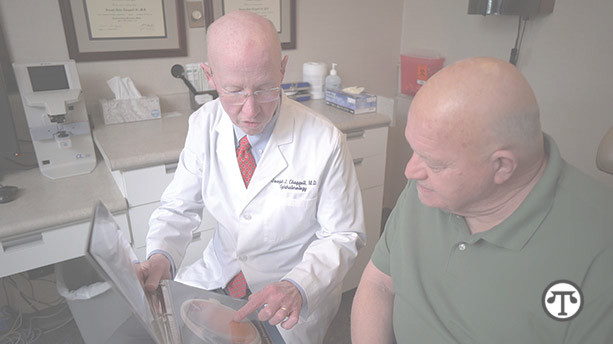 (NAPSI)—People with low vision have blind spots that can make it difficult or impossible to drive, read or see faces. These impairments cannot be corrected by surgery or glasses. What’s more, too many are blind to the realization that much can be done to improve their quality of life.
(NAPSI)—People with low vision have blind spots that can make it difficult or impossible to drive, read or see faces. These impairments cannot be corrected by surgery or glasses. What’s more, too many are blind to the realization that much can be done to improve their quality of life.
What Can Be Done
In fact, low vision rehabilitation services help people make the most of the vision they have. The first step is to get an eye exam by an ophthalmologist, a physician who specializes in medical and surgical eye care.
Who Can Help
An ophthalmologist can determine the full extent of vision loss and exact location of blind spots. Either the ophthalmologist or a low vision specialist can then determine the best techniques and devices that can help you get around your individual challenges.
Where EyeCare America Comes In
If you’re concerned about the cost of the exam, the American Academy of Ophthalmology’s EyeCare America program may be able to help. This national public service program provides eye care through volunteer ophthalmologists for eligible seniors 65 and older; and those at increased risk for eye disease. As one EyeCare America patient said, “I’m a senior living on a low income. It had been 30 years since I’d had an eye exam. It was a true blessing to receive this service.”
Low Vision Services Offer Hope
The field of vision rehabilitation has advanced significantly over the years, offering more effective technologies and strategies. Today, ophthalmologists’ solutions range from simple, portable video magnifiers to enlarge text and objects to high-tech glasses with cameras that let people read text and see faces.
In addition, there are many simple changes people can make on their own to help them live better:
- Improve contrast. Contrasting colors can make it easier to accomplish household tasks and improve safety. Put dark place mats under white place settings, get area rugs that are a contrasting color with the floor and kitchen towels and cutting boards that contrast with the counter top. Use contrasting colored tape along the edges of rugs, stair steps and lamp shades.
- Improve lighting. Every year, about three million older Americans are treated for injuries from falls, according to the Centers for Disease Control and Prevention. Many of these falls are caused by low vision. Add lighting to staircases and dark hallways. Remove rugs from hallways to prevent tripping. Task lighting in the kitchen can make food preparation safer and easier.
- Reduce clutter and organize. A cluttered house is more difficult to navigate and can contribute to falls and frustration. When each item has a specific place and is identified with a high-contrast label, it’s easier to locate items needed for everyday living.
- Embrace technology. Books on tape and personal voice-activated assistants, such as Google Home or Amazon’s Alexa, can be enormously helpful for people who can no longer see well enough to read, dial a phone or set a thermostat. With a simple voice command, these can phone dial a friend for you while the thermostat dials up the heat.
While there isn’t one strategy or tool that works for every person, vision rehabilitation offers hope for many and can help people stay in their homes and continue doing the things they love.
Learn More
For more facts and tips, visit www.eyecareamerica.org. To see if you or someone you care for is eligible for the EyeCare America program, visit www.aao.org/eyecareamerica.
Interesting links
Here are some interesting links for you! Enjoy your stay :)Site Map
- Issue for July 3, 2025
- Issue for June 26, 2025
- Issue for June 19, 2025
- Issue for June 12, 2025
- Issue for June 5, 2025
- Issue for May 29, 2025
- Issue for May 22, 2025
- Issue for May 15, 2025
- Issue for May 8, 2025
- Issue for May 1, 2025
- Issue for April 24, 2025
- Issue for April 17, 2025
- Issue for April 10, 2025
- Issue for April 3, 2025
- Issue for March 27, 2025
- Issue for March 20, 2025
- Issue for March 13, 2025
- Issue for March 6, 2025
- Issue for February 27, 2025
- Issue for February 20, 2025
- Issue for February 13, 2025
- Issue for February 6, 2025
- Issue for January 30, 2025
- Issue for January 23, 2025
- Issue for January 16, 2025
- Issue for January 9, 2025
- Issue for January 2, 2025
- Sections
- Our Town’s Services
- Classifieds
- About Us
- Original Columnists
- Community Commentary
- The Best View
- Eric’s Tech Talk
- The Frugal Mainer
- Garden Works
- Give Us Your Best Shot!
- Growing Your Business
- INside the OUTside
- I’m Just Curious
- Maine Memories
- Mary Grow’s community reporting
- Messing About in the Maine Woods
- The Money Minute
- Pages in Time
- Review Potpourri
- Scores & Outdoors
- Small Space Gardening
- Student Writers’ Program
- Solon & Beyond
- Tim’s Tunes
- Veterans Corner
- Donate






